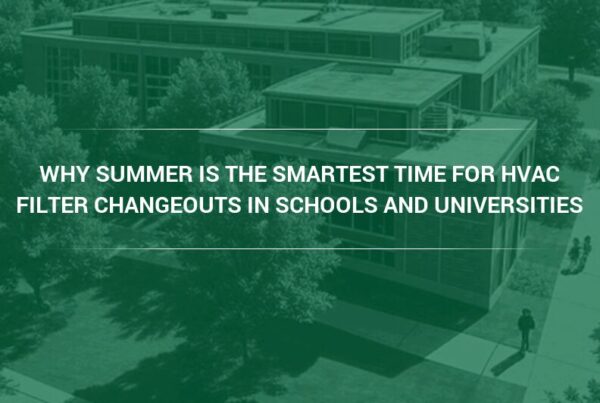The lessons that commercial and industrial businesses can learn from the healthcare sector in terms of air purification, air filtration, and indoor air quality in the wake of COVID-19.
Any commercial or industrial HVAC system is designed to perform a multitude of tasks, including heating, cooling, filtration, pressurization, and dehumidifying. Each of these direct influences on the indoor air quality within those buildings. One industry that takes those performance qualities very seriously is the: hospitals and healthcare facility management industry.
In the wake of COVID-19, commercial and industrial companies are taking a closer look at the way that these healthcare facilities approach IAQ in hopes of finding advanced air pollution solutions, systems, or products that can be applied to their own industries.
In some cases, these solutions are specialized filters or technological elements. In others, it is methods, procedures, or policies. Regardless of how it’s achieved, the goal is to find new ways to remove airborne contaminants and pathogens (like those that cause COVID-19) from commercial spaces.
Biological Air Pollution: Can Commercial Air Filters Fight What Causes COVID-19?
Even though the world has been experiencing the effects of this global pandemic for months, there are gaps in our collective understanding of how the COVID-19 virus is transmitted and how hospital-grade filtration systems can affect indoor transmission rates.
“While it’s true that HEPA filters can capture over 99% of particulate matter, which includes some viruses and bacteria, the threat from the SARS-CoV-2 virus cannot be entirely eliminated by simply upgrading your filters” explains Mark Davidson, Manager of Technical Materials for Camfil USA. Over the last few months, Camfil and other major air filter manufacturers have found themselves inundated by questions about the virus and what role HVAC systems and filters play in mitigating risk.
“The reality is hospitals aren’t only using top-of-the-line HVAC air filters to address biological threats.
They are using clean air to create areas of positive pressure that acts as a barrier and prevents airborne contamination from flowing into high-risk areas. While this air is being filtered, it’s also being conditioned and not just for temperature, but for humidity. Controlling humidity is a proven strategy to controlling the growth of microorganisms. All these techniques. They’re effective anti-viral concepts that can be applied to the commercial sector.”
Improving Post-Pandemic Indoor Air Quality Management Standards
According to air quality experts like Davidson, one of the first steps in implementing a post-COVID air filtration plan is having another look at your commercial HVAC filters. The filter should be sized correctly to match airflow and properly installed to prevent the bypass of contaminants.
For standard-risk areas like commercial offices and retail buildings, filters with a minimum MERV 15/15A value such as the Durafil ES2 or the Hi-Flo ES are adequate solutions for indoor air quality management. However, areas occupied by individuals who are known to be diagnosed with COVID should switch to a HEPA air filter with a minimum rating of at least 99.7% such as the Absolute VG.
Addressing One Potential Variable that Could Increase the Risk of Infections Spreading
When it comes to biological contaminants like viruses and pathogens, controlling humidity may be one of the most important functions of a commercial HVAC system. According to research by the National Institutes of Health, the absolute humidity of indoor space can affect the way viruses like the ones causing the flu and COVID-19 proliferate.
The study suggests that low absolute humidity can cause increased infection rates. Critical information such as this is what drives healthcare facilities to pay close attention to the way their systems are handling humidity.
Can Hospital-Grade HVAC Systems Make Safer Workplaces after COVID-19?
The question of whether commercial entities and industrial manufacturers will upgrade their facilities with more complex HVAC systems often comes down to the significant investment of capital that may be required. Fortunately, installing high-capacity filters in existing HVAC systems is a relatively inexpensive way that employers can improve indoor air quality, a step that would certainly decrease the overall health risk of their employees.
Q: Can Portable Air Purifiers Equipped with HEPA Air Filters Reduce the Risk of Getting Sick?
Air filtration companies like Camfil USA continue to equip American businesses with filtration tools needed to address airborne threats. Portable air purifiers with HEPA air filters like those found in the popular CamCleaner can help hospitals, data centers, and food production facilities remove airborne contaminants, particulates, and pathogens without the need to replace the entire system.
For anyone who is looking to learn more about how the experts are approaching indoor air quality, the Camfil USA Clean Air Blog is packed with valuable information and actionable advice for commercial, industrial, and retail businesses alike.
Sources



